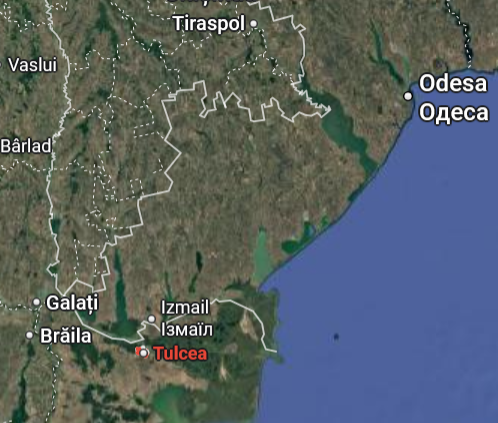-
Posts
15885 -
Joined
-
Last visited
Content Type
Profiles
Forums
Store
Downloads
Recruiting - 2020
2019-2020 Football Season
Football
Entertainment
Sports
News and Business
Cloak Room
Transfer Portal
Recruiting
Events
Everything posted by Bevo
-
-

2025-26 Houston Rockets Thread - Back to Contention?
Bevo replied to BigOrange1's topic in Basketball
Sabonis had a great career, just not in the NBA - He came to the NBA already worn down. -

Texas Recruiting Notes 2026: Boulevard of Broken Bagmen
Bevo replied to texifornia's topic in 🤫$9.95🤫
Even more disappointing is trying to determine which coach on offense has performed the best. -
Russia wants demilitarization of Ukraine because then it can attack Ukraine again in a few years. Ukraine knows Russia and knows what will happen if it demilitarizes. But Ukraine still wants to end the war because frankly its people are tired and it is running out of bodies to maintain the front lines and has no opportunity through the battlefield to regain control of land. It is a battle of attrition that Ukraine knows it can’t win. Victory can only come with the death of Putin or civil unrest within Russia. I think the last link I posted yesterday Rusi. something gave 4 ways the war could go - it’s a worthwhile read.
-
Everything points to Russian intelligence services commissioning sabotage on Polish railways over the weekend, a spokesperson for the special services minister said on Tuesday. An explosion that damaged a Polish railway track on a route to Ukraine was an “unprecedented act of sabotage,” Prime Minister Donald Tusk said on Monday as he vowed to catch those responsible for an incident he said could have ended in tragedy. The blast on the Warsaw-Lublin line that connects the capital to the Ukrainian border followed a wave of arson, sabotage and cyberattacks in Poland and other European countries since the start of the war in Ukraine. Warsaw has in the past held Russia responsible, saying Poland has become one of Moscow’s biggest targets due to its role as a hub for aid to Kyiv. Russia has repeatedly denied being responsible for acts of sabotage. “The blowing up of the railway track on the Warsaw-Lublin route is an unprecedented act of sabotage aimed at the security of the Polish state and its citizens,” Tusk wrote on X. “An investigation is underway. Just like in previous cases of this kind, we will catch the perpetrators, regardless of who their backers are.” Four government ministers told a press conference there was one confirmed and one “highly probable” act of sabotage, referring to an incident on another part of the route where railway traction was damaged. Warsaw said in October that Poland and Romania had detained eight people suspected of planning sabotage on behalf of Russia. Local police said on Sunday that a train driver had reported damage on the railway line, but authorities were not able to immediately confirm that it was a result of sabotage. “This route is also used to transport weapons to Ukraine,” Tusk said in a video address. “Fortunately, no tragedy occurred, but the legal implications are very serious.” Defense Minister Wladyslaw Kosiniak-Kamysz said the military was inspecting a 120 km (74.6 miles) stretch of track leading to the Ukrainian border. Interior Minister Marcin Kierwinski said that abundant evidence was collected at the site that should allow for the perpetrators to be quickly identified. The damaged route that passes through the eastern city of Lublin is used by 115 trains daily, the infrastructure minister said.
-
The red is the evacuated village. There is a thin stretch of Ukranian land reaching it. Moldova separated by the white line is superior to the thin stretch of land.
-
Ukraine-Russia war latest: Nato member Romania evacuates villages after Putin’s attack on tanker Former security minister Tom Tugendhat says incident is tantamount to Russia 'attacking Nato’ A suspected Russian drone attack in Ukraine saw a Turkish tanker hit in the Odesa region Monday, setting the vessel on fire and prompting evacuations across the Danube river in Romania. Three Romanian villages have been evacuated after Russia attacked a Turkish LNG tanker off the coast of neighbouring Ukraine on Monday. The vessel suffered significant damage during a Russian strike in Ukraine's southern Odesa region and scores of people were evacuated, mostly from the border village of Tulcea in the Nato member state, over fears it could explode. Tom Tugendhat, the former security minister, said the incident was tantamount to Russia "attacking Nato". “Putin is expanding his Ukrainian war to dissuade us from defending European freedom,” he warned. The incident came as Emmanuel Macron hosted Volodymyr Zelensky at the Elysee Palace in France, where the pair announced a deal to provide Kyiv with 100 Rafale fighter jets. The French president said he hoped that a peace deal to end the war in Ukraine could be struck as early as next year, or before the French presidential election in April 2027.
-
I wouldn't mind replacing our QB coach with Joe Bleymaier and making him co-OC.
-
I feel like I’m the victim.
- 66 replies
-
- 10
-

-

-

-
U.S. President Donald Trump said on Nov. 16 that congressional Republicans are preparing legislation that would impose sanctions on any country doing business with Russia. "Any country that does business with Russia will be very severely sanctioned," Trump told reporters in Palm Beach, Florida. He added that Iran may also be included in the new sanctions package. The forthcoming legislation would build on a series of actions the Trump administration has taken in recent months. In October, the administration announced its first sanctions against Moscow, targeting Russia's two largest oil companies, Rosneft and Lukoil, along with their subsidiaries. Most recently, however, the U.S. Treasury Department delayed sanctions on Lukoil — originally scheduled to take effect Nov. 21 — to allow the company time to sell off its foreign assets. Earlier this year, Washington also imposed 50% tariffs on India, one of the largest importers of Russian oil, citing New Delhi's continued purchases despite warnings that secondary sanctions could follow if Moscow failed to advance peace efforts in Ukraine. Trump offered no additional details about the sanctions legislation under development but said Iran would likely be among the targets. Since Russia launched its full-scale invasion of Ukraine, Iran has served as a critical Kremlin ally, supplying weapons and military equipment to Moscow's war effort. Ukraine and Greece have signed a deal to import American liquefied natural gas to Ukraine for the first quarter of 2026, as Ukraine seeks to secure energy supplies amid continued Russian strikes on its infrastructure. This was announced by Ukrainian President Volodymyr Zelensky during a joint press conference with Greece's Prime Minister Kyriakos Mitsotakis in Athens. “Our agreements with Greece today are a key part of the broader energy package we’ve been preparing to ensure Ukraine has sufficient gas this winter,” Zelensky said. The gas import deal comes at a critical moment for Ukraine moment as it suffers regular Russian attacks on its energy infrastructure leading to emergency power cuts in many cities, including the capital, Kyiv. These strikes have left the country urgently seeking new equipment and 4.4 bcm of gas needed to get through the wintr. According to Mitsotakis, U.S. liquefied natural gas (LNG) will be transported via the so-called "vertical corridor" from the port of Alexandroupolis in Greece to Odesa in Ukraine, positioning Greece as Europe's new gateway for U.S. gas. The route connects Greece to Ukraine through Bulgaria, Romania, and Moldova. Zelenskyy also thanked international partners, particularly the United States, for their assistance in implementing the project. "We will be able to receive energy from the United States through Greece, because this is truly a global infrastructure located in Greece," he noted. The agreements cover both immediate gas supplies for the first quarter of 2026 and long-term arrangements aimed at strengthening Ukraine's energy security. Greek natural gas operator DEPA has reported that it signed a letter of intent with Ukraine’s state-owned oil and gas giant Naftogaz regarding the supply of natural gas to Ukraine for the winter period between December 2025 and March 2026.
-
Probably lots of cameras in Manhattan near Times Square. Plus it probably stems from an incident that occurred wherever Boyd was between midnight and 2am
-
The next set of articles pretty much state that long range aerial attacks can only have limited success and that ground wars are inevitable. And the US always plans for short-term conflicts and fails when it comes to long-term affairs, pointing out our loss of Afghanistan and Iraq, and our one month war game scenarios for Taiwan. So yeah, pretty terrifying. And our industrialized societies in the US and Europe don't have the will nor the control of its citizens to sustain the losses that Russia has been willing and able to sustain. One positive with regard to Russia's conflict with the West is the decline of the Russian economy and the impact of Ukraine strikes on not just the Russian economy but also on Russian civilian support for the war. The article below seems to state that Ukraine should hit civilian targets in Russia because it would eventually cause Russian civilian support for the war to erode. I personally have my doubts though because it would lead the West to conclude that Ukraine isn't worthy of support. https://www.csis.org/analysis/russias-war-ukraine-next-chapter Unfortunately, all the articles that I have posted today (while extremely informative) are exceedingly long. So, most of us probably aren't going to go through them all.
-
Some interesting TLDR articles related to the article above: https://re-russia.net/en/analytics/0340/ https://ecfr.eu/article/the-long-game-how-europe-can-outlast-russias-war-of-attrition/ https://www.armyupress.army.mil/journals/military-review/online-exclusive/2025-ole/russia-ukraine-war/ https://geopoliticalfutures.com/russias-new-war-of-attrition/ https://www.rusi.org/explore-our-research/publications/commentary/attritional-art-war-lessons-russian-war-ukraine Personally, I think the last article is the most on point on the future of war. The US focuses on expensive equipment and technologies where it probably needs to focus on larger quantities of inexpensive equipment.
-
Ukrainian intelligence is warning that a Russian Lancet drone is prowling the sky, loitering above Kramatorsk, like a heron poised over a fish pond, ready to strike. A laptop shows multiscreen images of medics racing through shredded forest, Russian soldiers in Ukrainian sights, bunkers being blown up – everyday terror. This is the future of war – and the West isn’t ready for what may be coming in an open conflict with Russia: mass casualties and a transformation of the battle beyond anything that Nato’s armies are training for. The laptop feed is for Rebekah Maciorowski, an American volunteer paramedic who runs the medical operations, evacuation and training for an entire battalion of men and women on Ukraine’s eastern front, under its 3rd Brigade. In a conventional war, she would be a major. In this conflict? She has no idea what her rank is and cares even less. But the revelations from this frontline soldier, one who has the rare claim to have shot down an incoming Russian drone attacking her patients, are chilling. “You have had encounters with Nato training teams. You’ve talked to Nato when you’ve been back in Europe. Do you think that they’re ready for the next war with Russia?” The Independent asks her. “No. No, I’m honestly a little bit terrified,” she replies – after more than 40 months at war here. She goes on to explain: “If you were to talk to Nato military officials, they would reassure you that everything is under control, they’re well equipped, they’re well prepared. But I don’t think anyone can be prepared for a conflict like this. I don’t think anyone can. “And what’s concerning to me is, while they’re offering training [in Europe for Ukrainians], I think it would do them well to also take some information and training from the Ukrainians.” Maciorowski has undergone training with Nato forces in the last year and says what they taught was relevant to Afghanistan and Iraq – not Ukraine. “When I went to train with Nato, the factor of drones was not really filtered in. It was very much the tactics that were learnt in the previous war. And these tactics now do not apply because you’re not making a linear assault. “Everything has changed with drones. And I don’t think it was factored in, at least not in this training,” she says in her secret medical evacuation headquarters. US medic Maciorowski and her team tend to injured Ukrainian soldiers in the Donetsk region (The Independent) Her teams evacuate wounded soldiers using quad bikes because armoured ambulances are now death traps, while quads can race between forests and dugouts trying to avoid drones. But her team takes heavy losses. Over the last week, a top medic, callsign Viking, was killed on a rescue mission east of Slaviansk. A few weeks before that, another driver was blown up by a drone. “I don’t see other Europeans coping with this,” she says. Nato’s leaders and intelligence agencies agree that Europe, especially, is already involved in a hybrid war with Russia. This includes propaganda to undermine democracy, cyber attacks, sabotage and assassinations. Lately, it has included probing attacks inside Poland and Estonia by Russian aircraft and continuous challenges at sea. An outright war may never happen. It may also be inevitable. Vladimir Putin has made it clear he wants to force the Baltic states back under Russian rule and has designs on all of eastern Europe in countries once dominated by Moscow. Ukrainians and Georgians know that when he says such things, he invades. If it came to a war, Russia has experience in modern combat that only Ukraine shares. An officer operating in Pokrovsk, where Ukraine says Russia is concentrating 150,000 men on trying to break through “We are changing the structure of the war on the go,” says Oleksandr Yabchanka, commander of a drone unit in the Da Vinci Wolves, part of the 59th Brigade. “There is bad news for Ukraine and Europe. Russia is adapting just like us. It is a colossal threat and very underestimated in Europe.” A spokesperson for the British-led programme Operation Interflex said that 61,000 Ukrainian soldiers had been trained for “putting them in the strongest possible position as they resist ongoing Russian attacks”. He said that Ukrainian military experts and drone operators had served as consultants to train soldiers going to war and that 91 per cent of Ukrainian soldiers who completed Nato’s basic training “feel more confident of their survivability at the end of the training”. However, a recent study by Jack Watling at the Royal United Services Institute (Rusi) warns that Nato needs to catch up with understanding that war has changed. The advent of small, deadly drones, often flown with first-person vision (FPV), frequently guided by fibre-optic cables, and capable of pinpoint accuracy far beyond what were considered front lines, has transformed conflict. Nato doctrine focuses on what it calls “combined arms manoeuvre”. This means an emphasis on the concentration of aircraft, armour, infantry and artillery with the aim to surprise and overwhelm an enemy. That doesn’t work any more. Dr Watling explains that “pervasive networks and sensors have made the ability to achieve surprise difficult”. Known as battlefield transparency, the modern surveillance of battlefields means that an unexpected attack is almost impossible. On top of that, “the ubiquity of precision weapons” makes concentrated forces vulnerable to “rapid attrition”. Armoured vehicles, engineering equipment, electronics warfare kit – it can all be spotted and picked off with ease, and over long distances. This means that the front lines are wide, deep, shattered and almost empty of infantry. Nato’s method is to take on mass attacks by the “near peer” forces of Russia. But Russia’s tactics no longer concentrate on mass – the weight of numbers in men and arms used against Ukraine three years ago. Now, Ukrainian forces are being attacked with long-range glide bombs. Russian drones hunt out Kyiv’s UAV teams in their bunkers and force them away from their forward lines. And above all, the lines of logistics are pounded with terrifying accuracy. Russian soldiers hide in dugouts, trying to avoid drones, near Zaporizhzhia, southern Ukraine (The Independent) As a result, small groups of two or four Russians covertly sneak into locations on the front lines to try to hold bunkers and dugouts while Ukrainian drones patrol overhead. The soldiers use blankets designed to muffle their thermal images, sometimes held above them on poles, to get into locations where they may be embedded for weeks or months. Ukrainian troops do the same. And now that their lines of communication have been cut, they rely entirely on supplies of food and ammunition, as well as medical supplies from drones in the air or on the ground. In Afghanistan, 99.2 per cent of British army casualties who were evacuated to the main Helmand hospital at Camp Bastion survived – mostly because they were taken there from the front lines within the first “golden hour” after injury. In any war with Russia, it could be days or weeks before a severely wounded Nato soldier could be evacuated. And the numbers injured in a single incident or a drone blast are likely to be high. “The wounds, the injuries, are catastrophic,” explains Maciorowski. “And they’re multiplying because the radius of impact for a drone that drops a grenade or explosive device is massive. “So you can have an entire group that’s taken out, all of them injured in one drop. We’re not seeing that hand-to-hand combat so much now. “Now we’re looking at prolonged field care; guys who are unable to evacuate and giving medical advice over a radio, making sure that when guys come to the unit, every soldier is trained like a medic because we don’t have enough medics, and there’s no guarantee that they can get to the wounded soldier in time. “So every soldier needs to be a highly trained medic… to treat himself and others around him.” Medics of Da Vinci Wolves Battalion treat Ukrainian soldiers injured during fighting near Pokrovsk in August (AP) Nato’s regular armed forces are rarely, if ever, trained how to treat themselves for long periods with antibiotics and intravenous drips. And, above all, they are unprepared for the potential mass casualties that Nato forces would face in a conflict with Russia. “We almost can’t comprehend the scale of those losses,” says Ed Arnold, a former British Army officer who is now with Rusi. Gangrene among Ukrainian soldiers is commonplace because they are stuck on the front lines for so long. Britain’s biggest mobile field hospital has a capacity of only 80 general beds and 10 for intensive care. In a Ukraine-type war where the UK, and Nato, can expect hundreds of casualties every day, the capacity to cope is just not there. “We should have Ukrainians training [British officers] at Sandhurst (Royal Military Academy) at the moment,” adds Arnold. “There should be a resident Ukrainian platoon, which regularly rotates, giving us the actual download on what’s going on.”
-
Russia has lost around 1,158,260 troops in Ukraine since the beginning of its full-scale invasion on Feb. 24, 2022, the General Staff of Ukraine's Armed Forces reported on Nov. 16. The number includes 860 casualties that Russian forces suffered over the past day. According to the report, Russia has also lost 11,353 tanks (+3), 23,591 armored fighting vehicles (+3), 67,464 vehicles and fuel tanks (+68), 34,469 artillery systems (+26), 1,543 multiple launch rocket systems (+2), 1,244 air defense systems, 428 airplanes, 347 helicopters, 81,286 drones (+409), 28 ships and boats, and one submarine.
-
Hey wingo caught a pass
-
And our corners fucking suck tonight
-
Is wingo getting paid to drop passes? Nevermind, none of our wrs or tes can catch the ball. Manning looks good but it doesn’t matter.
-

Texas Recruiting Notes 2026: Boulevard of Broken Bagmen
Bevo replied to texifornia's topic in 🤫$9.95🤫
Big humans hasn’t been that big of an issue. I wouldn’t consider Banks and Baker huge and Cojoe and Goosby are good and large. Turntine coming in this year is actually undersized. The problem is more of a numbers issue. We are recruiting non-starters like Stroh and Wright and aren’t recruiting enough guys who can start. Lee, Martinez, Utu, and Roseborough were all fine prospects and we may get one of those guys. Meanwhile, we have a huge hole in the middle of the line again with a class that will have 2-3 starters in it. Basically, we aren’t devoting enough resources into the offensive line. -

Texas Recruiting Notes 2026: Boulevard of Broken Bagmen
Bevo replied to texifornia's topic in 🤫$9.95🤫
Fuck that predicted OL class. At least we will have a strong defense again. -
I'll assume Korn Ferry. Some more highlights
Football ... Basketball ... Baseball ... Other Sports ... Futbol ... 🤫995🤫 ... Gambling ... Movies & TV ... Music ... Hobbies ... Lulz ... Food & Travel ... Daily Texan ... Business and Markets ... Cloak Room ... Help ... For Sale ... Board Discussion ... Subscribe!... Donate!... COOKIE MONSTER!





